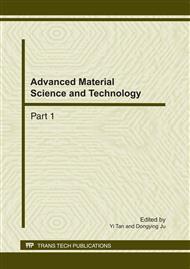p.913
p.917
p.921
p.925
p.929
p.933
p.937
p.941
p.945
Simulation of Discrete Dislocation Statics and Dynamics of Magnesium Foam
Abstract:
The simulation of magnesium plasticity at the microscopic and mesoscopic scale using space and time-discretized statics and dynamics dislocation was carried out. The complexity of discrete dislocation models dues to the fact that the mechanical interaction of ensembles of such defects is with an elastic nature, and therefore involves long-range interactions. The motion of dislocations or dislocation segments in their respective glide planes are usually described by assuming simple phenomenological viscous flows laws. The formulation of the dislocation dynamics is obtained by the Newton’s Second Law of motion for each dislocation or dislocation segment. The evolution of the dislocation position is obtained by simple difference algorithms.
Info:
Periodical:
Pages:
929-932
Citation:
Online since:
February 2011
Authors:
Price:
Сopyright:
© 2011 Trans Tech Publications Ltd. All Rights Reserved
Share:
Citation:


